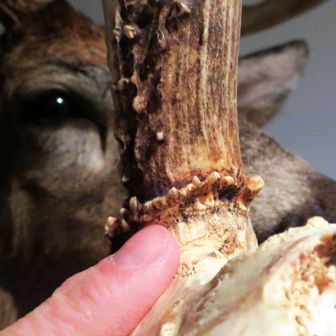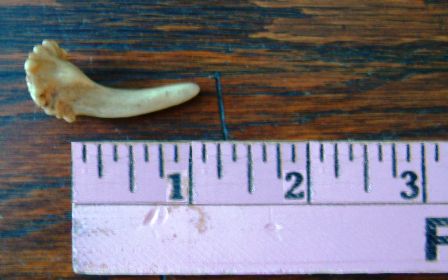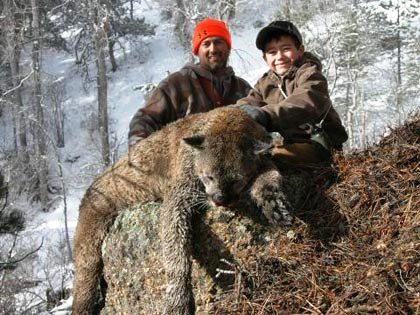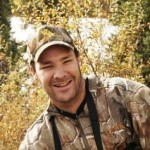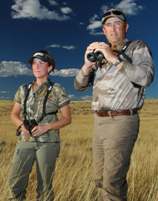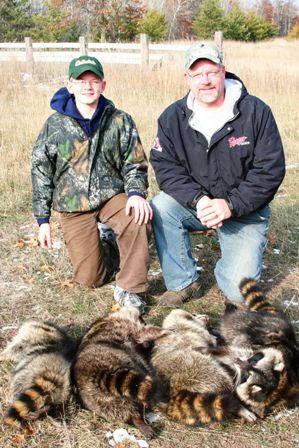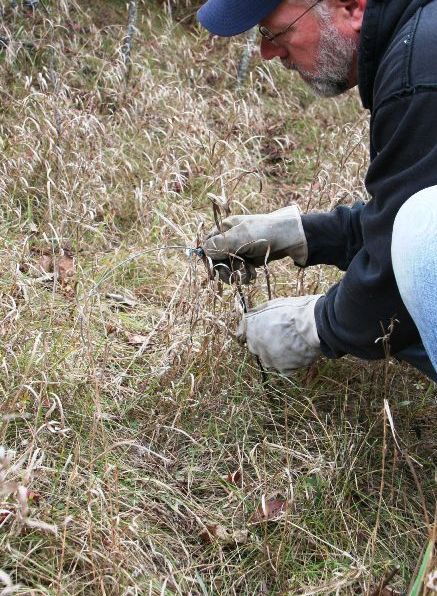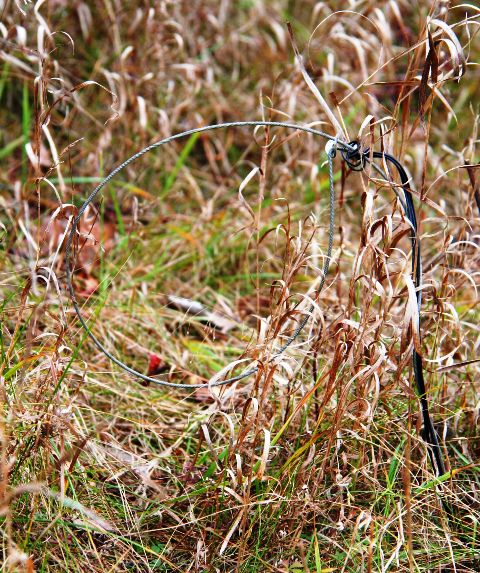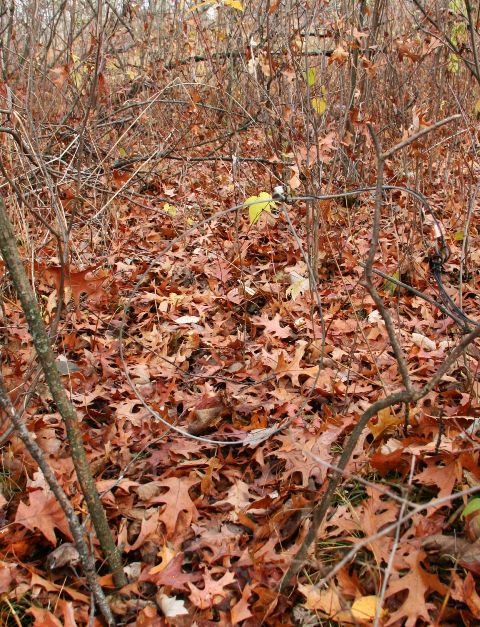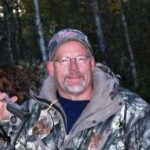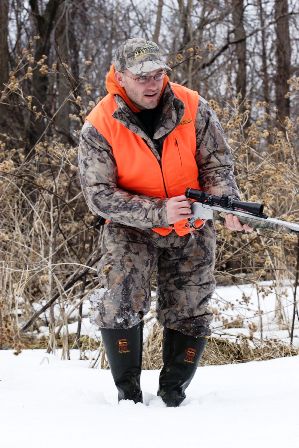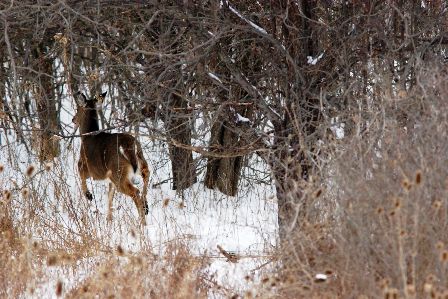Part 2: Where to find antlers
and why look for them?
by Steve Sorensen
Tips for Finding Shed Antlers.
Ask any deer hunter, “Are antlers fascinating?” On second thought, don’t ask. You don’t need to. It’s a given. Show me an antler and I’m likely to think it’s the most fascinating antler I’ve ever seen. There’s just something about them – and each one is unique.
Where to Look for Them Bones
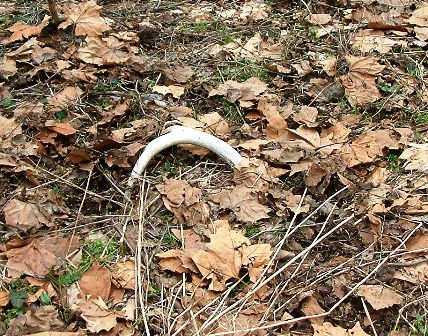
When antler hunting, be on the lookout for the distinctive curve of an antler. (Steve Sorensen photo)
If you are to find them before another hunter or some four-legged critter does, a few suggestions are in order. It pays to know that deer do certain things that make dropping their bones more likely at certain times and places.
In searching for sheds, consider bedding areas and other areas where deer congregate. While the deer is at rest, the antler is less likely to shed. But when the deer lurches forward to get his feet under him, he’ll move his head suddenly, possibly causing the weight of the antler to reach its tipping point. Also, any time a deer makes a quick jump, such as when climbing a bank or vaulting a fence, he may lose an antler that is ready to fall. Give those kinds of places an extra look.
Scour feeding areas, bedding areas, and the trails between. If a buck worms his way between the strands of a wire fence or ducks under low-hanging limbs, he may bump his antlers. When a deer is in a feeding posture, his antlers are precariously tipped forward. If antlers are ready to drop, the jerking movements made while feeding – scissoring off and pulling grasses and browse – can cause them to fall. And interactions with other deer — playing, sparring, and maintaining social courtesy spacing between animals – can provoke sudden movements that prompt antler dropping.
Why Look for Antlers?
Some hunters simply love them for their uniqueness, and they want to display them. Other hunters use them for handles on deer drags, or for knife handles. Some hunters cut them an inch above the burr and use them for drawer pulls. I’ve seen them cut cross-sectioned, polished up, and used for buttons. Antlers are always interesting. I use the ones I collect to decorate my office – I hang them around the perimeter of the room.
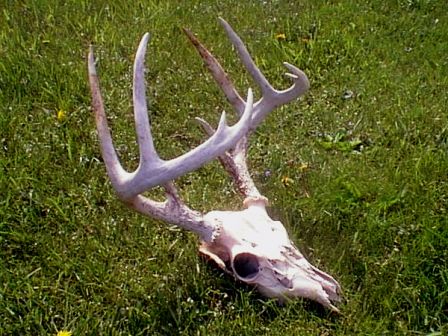
Check out anything you see that is white. I noticed this skull from a 10-point buck from about 40 yards away, and almost decided not to check it out. I saw just the tip of the nose sticking up behind a log. The antlers were buried in the leaves.
(Steve Sorensen photo)
Another reason to look for antlers is that winter has cooped you up inside for long enough. As soon as the snow has melted, it’s time to get out and explore. Hunting for shed antlers is good exercise.
Some hunters use a pair of shed antlers to create mock fights while hunting. Clashing antlers together and rattling them is a great way to call deer under the right conditions.
The biggest reason to look for antlers is that they will tip you off about bucks that made it through hunting season and escaped the ravages of winter. The place where you find an antler isn’t necessarily where he’ll be, come hunting season, but it might give you an idea where to start your trail camera work in the summer.
Give antler hunting a try – it doesn’t cost anything, and it just might put you on your next big buck. But be patient – you probably won’t find one on every outing, but when you find one you have a real trophy. The buck that grew it is still out there, alive – and he might cross your path come hunting season.
Missed part 1? Click here to read:
What are Antlers and When Do You Look for Them?
***
About Steve Sorensen
 Outdoor writer and speaker Steve Sorensen writes an award-winning newspaper column called “The Everyday Hunter®,” and he is the editor of the Havalon Sportsman’s Post. He has also published articles in Deer & Deer Hunting, North American Whitetail, and many other top magazines across the USA. Invite Steve to speak at your next sportsman’s event, and follow him at www.EverydayHunter.com.
Outdoor writer and speaker Steve Sorensen writes an award-winning newspaper column called “The Everyday Hunter®,” and he is the editor of the Havalon Sportsman’s Post. He has also published articles in Deer & Deer Hunting, North American Whitetail, and many other top magazines across the USA. Invite Steve to speak at your next sportsman’s event, and follow him at www.EverydayHunter.com.
For more articles by Steve Sorensen, click here.
Click here for the best deer skinning knife – and read what other hunters are saying about their Havalon Knives….
5,799 total views, no views today


